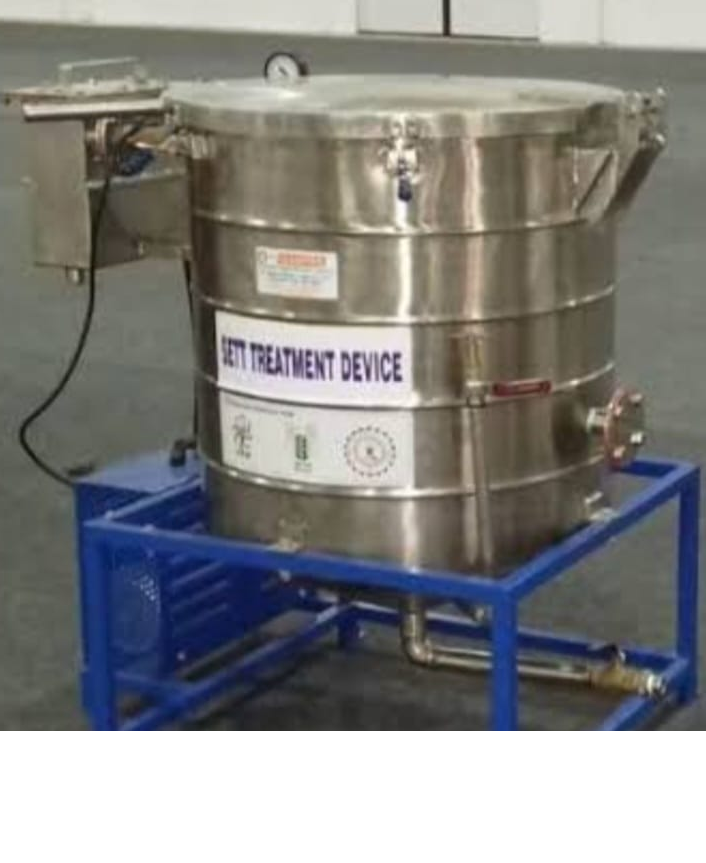Integrated Disease Management
(a) Soil management
(i) Preparatory cultivation
Since inoculum of red rot, smut, wilt, root rot and sett rot diseases remains viable in soil or plant debris, crop residues such as stubbles, dry foliages as well as dead and dried stalks and roots of canes should be destroyed to reduce the inoculums of these diseases from the field. The smut spores also can be covered interior to the soil.
(ii) Deep summer ploughing
A good deep tillage of the soil during summer season helps in exposing the inoculums to sun. Due to high temperature during summer, inoculums will destroyed. During this process, crop residues are buried in the soil along with inoculums.
(b) Seed management
(i) Regulative policy
During the movement, various diseases have been established in locality where the diseases were lacking. Thus, it becomes very essential to follow the vigorously restriction, so that such materials having affected with diseases may be destructed before it reach to the field.
(ii) Selection of varieties
Replacing susceptible varieties with resistant one is the most common way to control the diseases but, breeding and selection of varieties with high resistance against the pathogens keep on changing their behaviour in nature.
(iii) Selection of seed
It is advisable to use the seed material from a crop, free from diseases as it bear the primary source of spread. . Before planting, both the cut ends of setts with red and black spotted areas should be discarded. In a particular area, at least 5-6 varieties should be planted. The planting material from tissue culture should be prefer to check yellow leaf disease of sugarcane.
(iv) Sett treatment
Chemical treatment is used for protection of cut ends to avoid entry of soil borne pathogens through cut ends. Sett treatment with Carbendazim @ 1gm/lit of water dipping of setts for 30 minutes is recommended. This will not only protect the cut ends from soil borne pathogens but also enhance sett germinability by 10%. For protecting the seed materials before planting, the following practices are commonly used.
|
Sl No. |
Nature of heat therapy |
Temp. |
Duration |
Effects |
|
1 |
Hot-air |
540C |
8 hours |
Desiccation of buds and poor germination |
|
2 |
Hot-water |
500C |
2 hours |
Softening of buds observed Control of GSD, RSD and Smut diseases. |
|
3 |
Moist-hot-air |
540 C |
4 hours |
No adverse effect Most of the pathogens are destroyed |
|
4 |
Aerated steam |
500 C |
1 hours |
No adverse effect. It is effective against GSD, RSD, Leaf Scald and Smut diseases of sugarcane. |
C. Crop management
(i) Season of planting
Season and date of planting have a significant influence on disease development. Autumn planted cane crop showed resistance against diseases because its susceptible phase passes at time (March-June) when climatic conditions are unfavourable for pathogen. Spring planted crop is vulnerable to attack as the crop passes through the susceptible phase in (July-October). This time climatic conditions are favourable for pathogen development. Therefore, planting time should be alike that it will not match with the desirable conditions for the development of pathogen.
(ii) Crop rotation
Monoculture of sugarcane over large areas provides congenial conditions for the rapid build-up of inoculums. To break this, crop rotation with green manure crop should be followed because green crop not only increase the population of antagonistic micro flora but also helps in the production of vigorous root system and also helps in controlling soil borne pathogen. So, 2-3 years crop alternation should be practiced with non-host crop.
(iii) Drainage and irrigation
Flooding and ill drained conditions help in the spread of inoculums of red rot, smut, wilt and sett rot diseases. To avoid this, upland should be selected as far as possible, failing which good drainage facilities should be ensured for mitigating the diseases.
(iv) Companion cropping
Sugarcane when grown with coriander, garlic, linseed and mustard as a companion crop, they substantially reduce wilt incidence. The incidence of red rot was also reduced when sugarcane was grown after the harvest of garlic, coriander, linseed, mustard and onion.
Impact of different companion crops on red rot and wilt diseases of Sugarcane.
|
Sl. No. |
Treatment |
Red rot incidence (%) |
Wilt infection (%) |
|
1 |
Garlic + Sugarcane |
6.5 |
8.2 |
|
2 |
Onion + Sugarcane |
4.6 |
7.2 |
|
3 |
Coriander + Sugarcane |
4.2 |
8.6 |
|
4 |
Linseed + Sugarcane |
2.8 |
7.4 |
|
5 |
Mustard + Sugarcane |
3.2 |
5.2 |
|
6 |
Sugarcane alone |
20.2 |
25.6 |
(v) Frequent monitoring and rouging
Frequent and critical survey of cane field should be carried out carefully and diseased clumps should be removed from the field at an early stage to remove the foci of infection and thus preventing wide dissemination of inoculums.
(vi) Management through chemical and bioagent
• Several fungicides have been observed in reducing the disease, Sett treatment with Carbendazim/Thiophenate Methyl fungicide @0.1% before planting for 30 minutes.
• Three sprays with Carbendazim/Thiophenate Methyl @ 0.1% at 15 days interval during initial stage and drenching at 45 and 75 DAP was found effective in reducing the Pokkah boeng, red rot, wilt and sett rot diseases.
• After removing the whip smut two prophylactic sprays with Propiconazole @0.1 % at 20 days interval has been recommended.
• Spraying with Plantamycin @ 100 gm/Ac in 200 lt. after two months of planting at 15 days interval is affective against bacterial diseases of sugarcane.
• Two sprays of Imidachloprid @ 0.5 ml/lt after detrashing of dry leaves of monthly interval to check transmission by insect vectors was recommended.
• The soil borne inocula can be managed by the application Trichoderma culture @ 10 kg/ha. mixed with compost.
• The sugarcane sett treated with Trichoderma suspension (Conidia 106 /ml) for 15-30 minutes before planting has been found effective against sugarcane diseases.
Sett treatment with Sett Treatment Device
It is well known fact that the sugarcane planting materials serves as a primary source for the fungal diseases viz. Red rot, Wilt, Smut, PBD, Sett Rot etc. The management of these diseases poses a significant challenge to sugarcane growers in various regions of Bihar due to its detrimental effects on yields and quality. Sett treatment with fungicides and other agrochemicals inputs within the sett treatment device to combat these diseases originating from primary infection sources are suggested.
• For the management of red rot disease Thiophanate methyl (Roko 70WP) – 1.3g/lit.
Vaccum Level – 200 mm Hg,
Duration – Vaccum buildup – 5 min, Retention – 15 min, Air release – 5 to 10 minutes.
• For the management of Smut disease Propiconazole (Tilt -25 Ec) - 0.4 ml/lit
Vaccum Level – 200 mm Hg,
Duration – Vaccum buildup – 5 min, Retention – 15 min, Air release – 5 to 10 minutes.
• For the management of Wilt disease for sett treatment Propiconazole (Tilt -25 Ec) - 0.4 ml/lit
For soil drenching - Carbendazim 50 WP – 1 gm/lit
Vaccum Level – 200 mm Hg,
Duration – Vaccum buildup – 5 min, Retention – 15 min, Air release – 5 to 10 minutes.
• For Nursery management :
Nutrient mixture : Urea – 0.5 gm/lit + ZnSO4 – 0.5 gm/lit. + FeSO4 – 0.5 gm/lit.
+
Fungicides : Carbendazim – 0.5 gm/lit. or Propiconazole – 0.2 ml/lit.
+
Insecticides: Fipronil (Regent 5SC) – 0.5 ml/lit
Vaccum Level – 150 mm Hg,
Duration – Vaccum buildup – 5 min, Retention – 15 min, Air release – 5 to 10 minutes.



